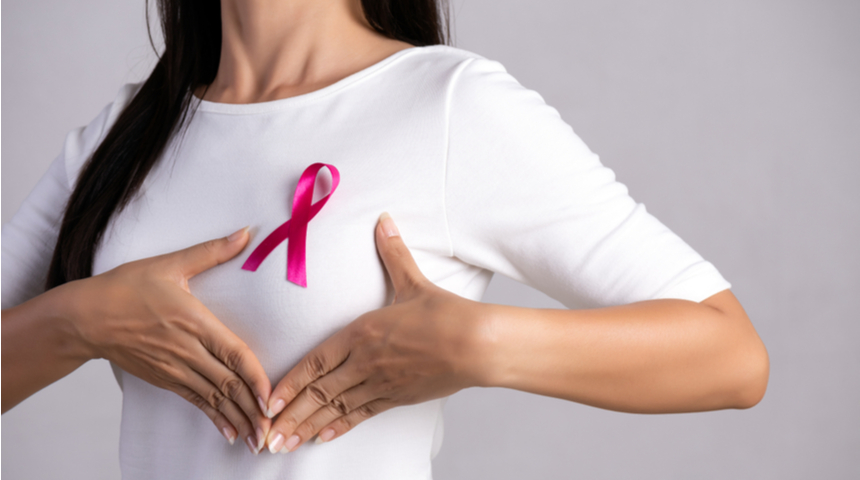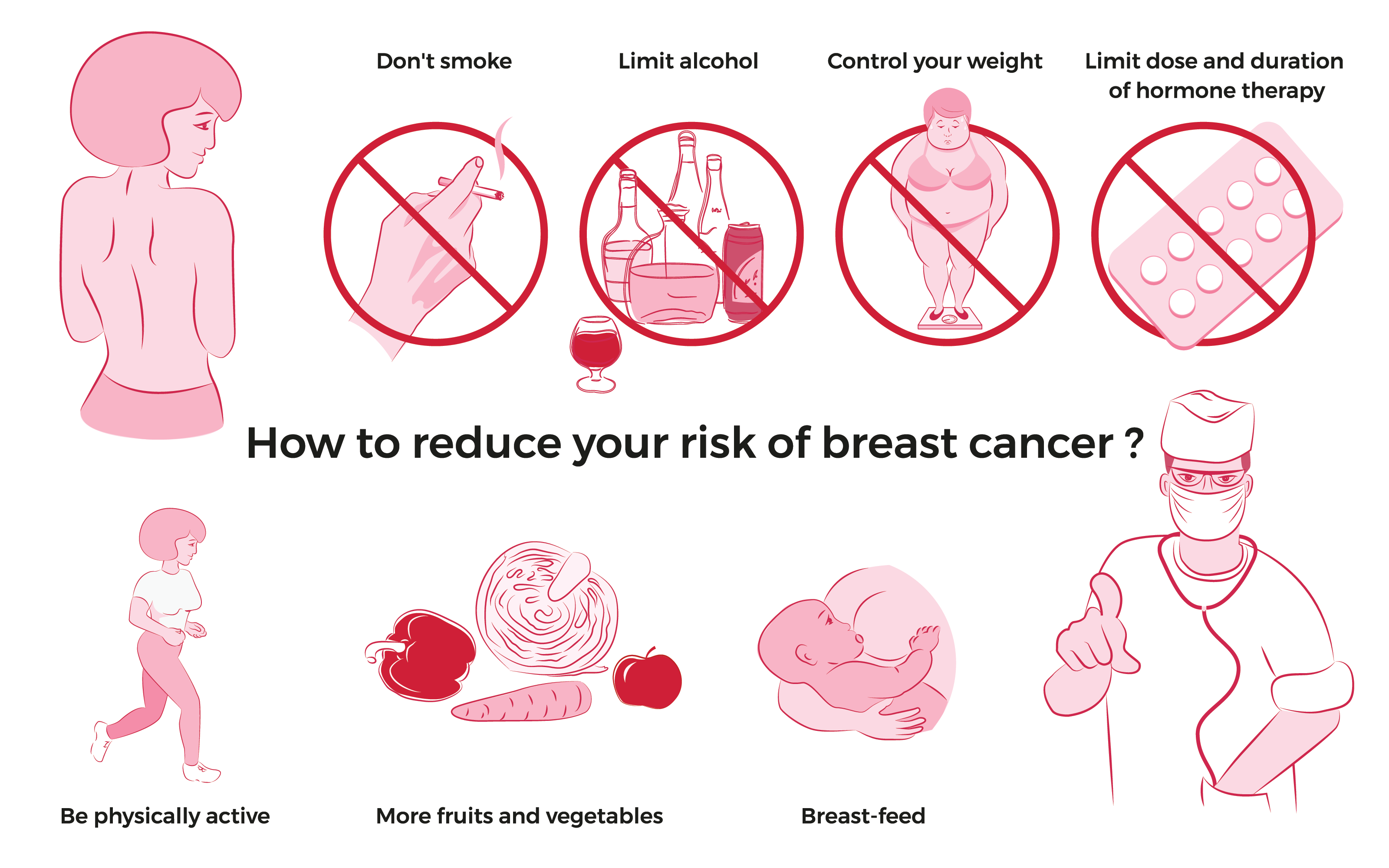
What are the Risk Factors for Breast Cancer?
Breast cancer remains to be the leading disease that women around the world suffer from, and the 2nd most common cancer worldwide. 1 in 4 of all cancers among women is breast cancer, according to the Breast Cancer Research Foundation. That said, being aware of the risk factors for breast cancer can help you mitigate the risks, and can end up saving your life.
Breast cancer risks vary from genetic factors to lifestyle choices. Though some of the risks are out of our control, being aware of them can help you determine if you are at a higher risk of developing the disease, and will help you make informed decisions on how to better reduce the risk of having breast cancer. As for the lifestyle choices, it is vital that you take seriously the risks listed below, and to make the right lifestyle choices to reduce the risk of having the disease.

Breast cancer risks that we can control
These are the breast cancer risks that we can control or address by simply changing our lifestyle:
- Weight: Excessive weight, especially for women after menopause, can significantly increase the risk of breast cancer. This is due to the fact that excess fatty tissue results in the production of more estrogen, and will be the main source to produce estrogen after menopause. Keeping your weight at a healthy level and your body fat low is a good way to maintain a healthy lifestyle. Aside from weight, a much more accurate thing to do is to get your body fat percentage.
- Alcohol Consumption: Excessive alcohol consumption has been found to decrease the liver’s ability to control the level of estrogen in the bloodstream, thus resulting in a higher risk of developing breast cancer.
- Smoking: Aside from the multitude of health risks smoking brings, smoking has also been found to increase the risk of developing breast cancer.
- Diet: Studies are looking at the relationship between diet and breast cancer risk and the risk of recurrence. According to the Women’s Health Initiative Trial, a diet that is low in fat may help reduce the risk of breast cancer. Though research is still lacking in this subject area, here’s what dietitians suggest:
- Eat plenty of vegetables and fruits (more than 5 cups a day).
- Try to limit your saturated fat intake to less than 10% of your total calories per day and limit your fat intake to about 30 grams per day.
- Eat food high in omega-3 fatty acids, such as salmon, walnuts, chia seeds mackerel, etc.
- Avoid trans fats, processed meats, and charred or smoked foods.
- Exercise: There’s a substantial amount of evidence that exercise can reduce breast cancer risk. According to the American Cancer Society, having 45-60 minutes of physical exercise 5 or more days a week can reduce the risk of breast cancer.
- Exposure to estrogen: Estrogen, the female hormone is whats responsible for breast cell growth. Because of this, having excess estrogen for significantly long periods of time without any breaks may increase the risk of breast cancer. Some of the factors for the production of excessive amounts of estrogen are due to our own lifestyle choices such as taking combined hormone replacement therapy for several years, taking estrogen alone for more than 10 years, being overweight, regularly drinking alcohol, as mentioned above.
- Recent oral contraceptive use: Using oral contraceptives (birth control pills) may slightly increase a woman’s risk of developing breast cancer, but only for a limited period of time. Women who stop using oral contraceptives past 10 years do not appear to have an increased risk of breast cancer.
- Stress and anxiety: There is no conclusive evidence that stress and anxiety can increase breast cancer risk. However, reducing your stress levels may improve your overall quality of life, and may reduce the risk of developing breast cancer. Activities such as yoga, meditation, visualization exercises, may help reduce your stress levels and according to research, may even strengthen the immune system.
Breast cancer risk factors that we can’t control
These breast cancer risks are things we cannot control, but it helps to know them just the same, to be better informed and to make the right choices to lessen the chance of developing breast cancer:
- Being a Woman: Being a woman automatically increases your risk of developing breast cancer, as the disease is drastically prevalent in women than it is in men. Women are at a higher risk of developing breast cancer because their breast cells are constantly changing, due to the activity of female hormones such as estrogen and progesterone.
- Age: As you grow older, the risk of developing breast cancer increases. 1 in 228 for ages 30 to 39 will develop breast cancer. This number will then jump up to 1 in 29 when you are in your 60s.
- Genetic History of Breast Cancer: If you have been diagnosed with breast cancer before, the chances of you developing the disease again are much higher. The same is true if you have family members or multiple relatives that have been diagnosed with breast cancer as well.
- Radiation Therapy: Though radiation therapy is used to combat cancer, radiation therapy done in the chest area may also increase your risk of developing breast cancer, especially if it is done during your adolescent or teenage years, as the breasts are still developing.
- D.E.S: The use of diethylstilbestrol (DES), a medication used to prevent miscarriage, prescribed in the 40s to the 60s, has been found to slightly increase the risk of breast cancer. The daughters of women who took DES also have a higher risk of developing breast cancer.
- Estrogen: Excess estrogen for long periods of time may also lead to breast cancer, as the hormone estrogen stimulates growth in breast cells. Aside from the lifestyle choices that increase the production of estrogen, these uncontrollable factors increase the production of estrogen as well:
- Starting menstruation before age 12
- Going through menopause at a later age (55 or above)
- Exposure to estrogen due to environmental factors, such as hormones present in meat or pesticides.
- Breast cellular changes: Unusual breast cell changes, commonly found during a breast biopsy (removal of suspicious breast tissue to be examined under a microscope) may increase the risk of developing breast cancer. These changes include overgrowth of cells (called hyperplasia) or abnormal (atypical) appearance.
- Pregnancy and breastfeeding: On the positive note, Pregnancy and breastfeeding, which reduce the number of menstrual cycles in a woman’s lifetime, is found to reduce the risk of breast cancer. However, not having a full-term pregnancy, or having your first full-term pregnancy beyond age 30, may increase the risk of breast cancer. Breastfeeding has also been found to reduce the risk of breast cancer, especially when done for 1 1/2 to 2 years.
Being aware of these risks will guide you on the necessary steps to reduce the risk of developing the dreaded disease. Always remember to keep a healthy lifestyle, regularly do a self-examination for breast cancer and to undergo a mammogram at least once every 2 years. Taking the necessary steps to mitigate the risk of breast cancer can help save your life.
